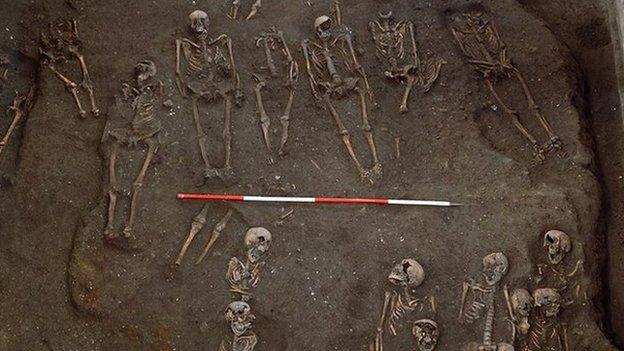Medieval Cambridge skeletons reveal injuries to manual labourers
- Published
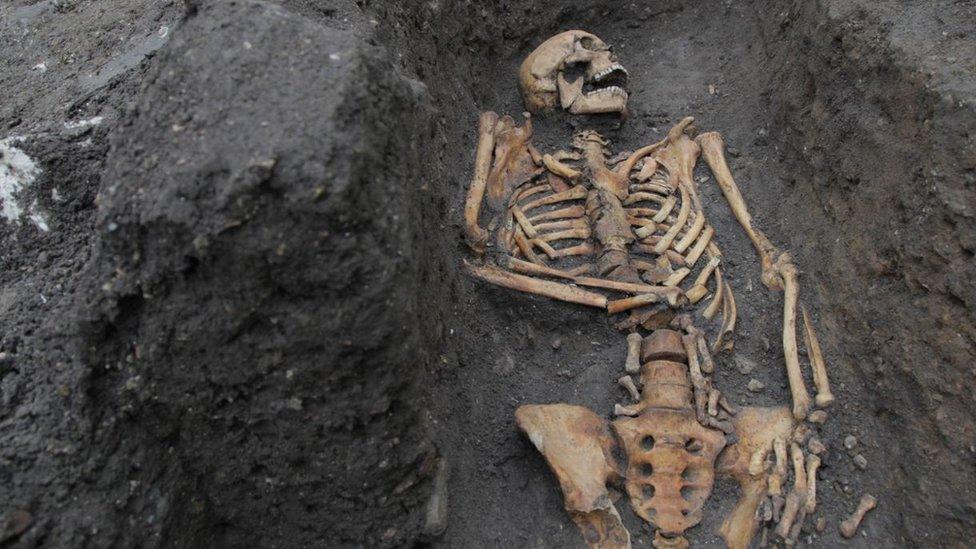
The skeletal remains found at three cemeteries were X-rayed to determine injuries
X-rays of more than 300 graveyard skeletons have revealed the high levels of injuries suffered by medieval manual labourers.
Skeletons from three local graveyards were studied by archaeologists from Cambridge University.
They found 44% of working people in a parish cemetery had bone fractures, compared to 32% in a wealthier one, and 27% in a cemetery for the infirm.
The study had "helped gauge the hazards of daily life", the team said.
The burial sites were within what is now the historic city centre, and the 314 skeletons were at least 25% complete.
They dated from the 10th to 14th Centuries when Cambridge was primarily a provincial town of artisans, merchants and farmhands, with scholars arriving in 1209.
Life was toughest at the bottom - but life was tough all over
The research catalogued the nature of every break and fracture on 75 skeletons from an Augustinian friary which buried wealthy donors alongside clergy, and 155 buried at the charitable Hospital of St John the Evangelist, where the infirm and destitute were interred.
However, they found the highest number of fractures on the 84 skeletons from the parish graveyard, called All Saints by the Castle.
"We can see that ordinary working folk had a higher risk of injury compared to the friars and their benefactors or the more sheltered hospital inmates," said Dr Jenna Dittmar, from the university's Department of Archaeology, external.
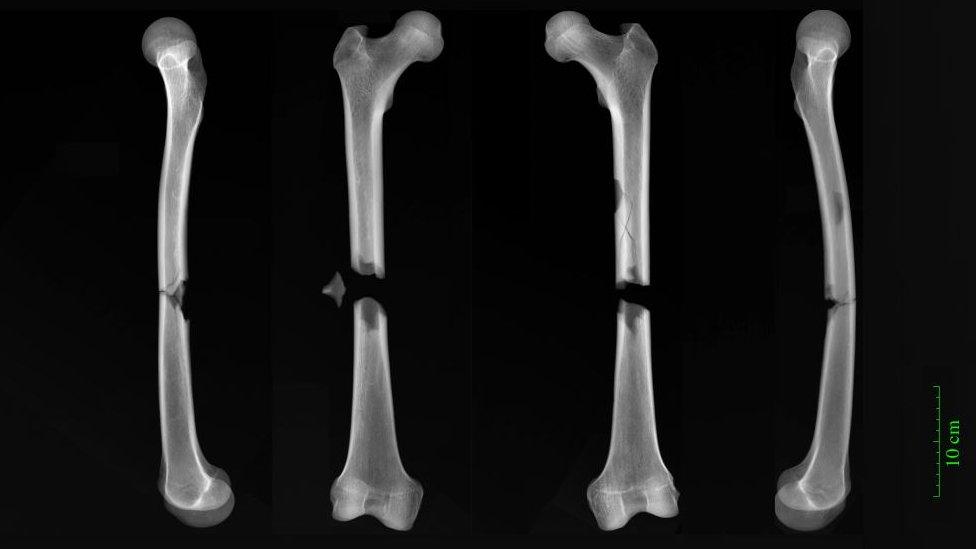
X-rays of butterfly fractures to both femora of an adult man buried in an Augustinian friary
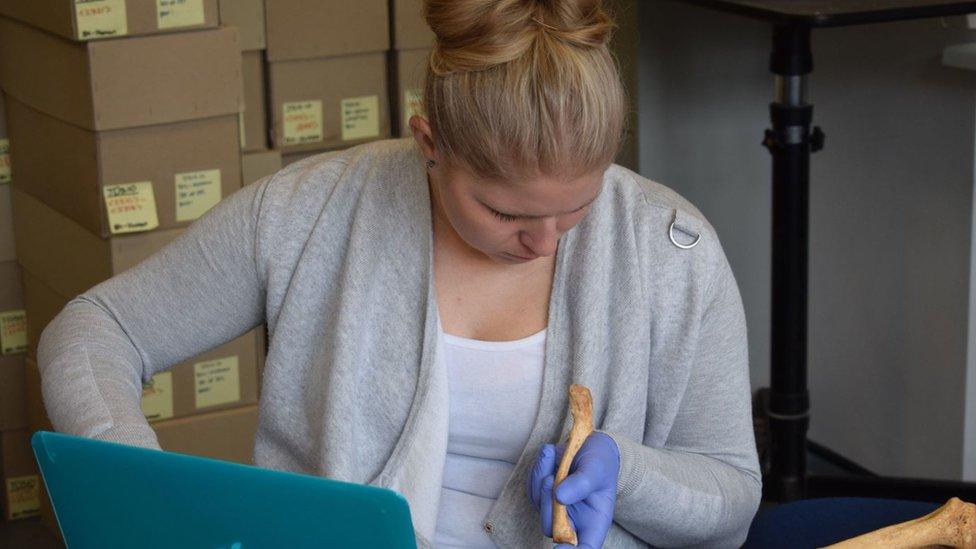
Across all sites the team found fractures were more common in male remains (40%) than female (26%)
Working life often began at the age of 12 and she said those buried at the parish site would have been involved in "long hours doing heavy manual labour" including stonemasonry, blacksmithing or "bone-crushing work in the fields".
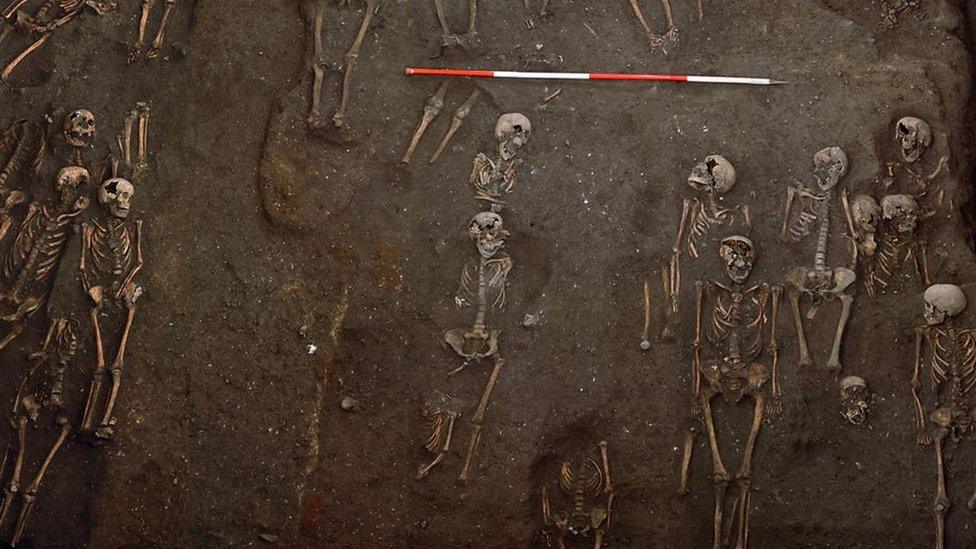
Some of the remains were unearthed on the former site of the Hospital of St John the Evangelist in 2010, where St John's College is now
One woman buried at the All Saints cemetery showed signs of possible domestic abuse, they said, with rib, jaw, foot and vertebrae fractures that had healed before her death.
However, the most severe injuries were found on a friar, whose thigh bones were both broken in what they suspect to have been a cart accident.
Dr Dittmar said today's clinicians would be familiar with such injuries - on those hit by vehicles.
Another friar showed signs of defensive fractures to his arms and blunt force trauma to his skull, which the team believes were probably as a result of being attacked.
"We can see this inequality recorded on the bones of medieval Cambridge residents," Dr Dittmar said.
"However, severe trauma was prevalent across the social spectrum."
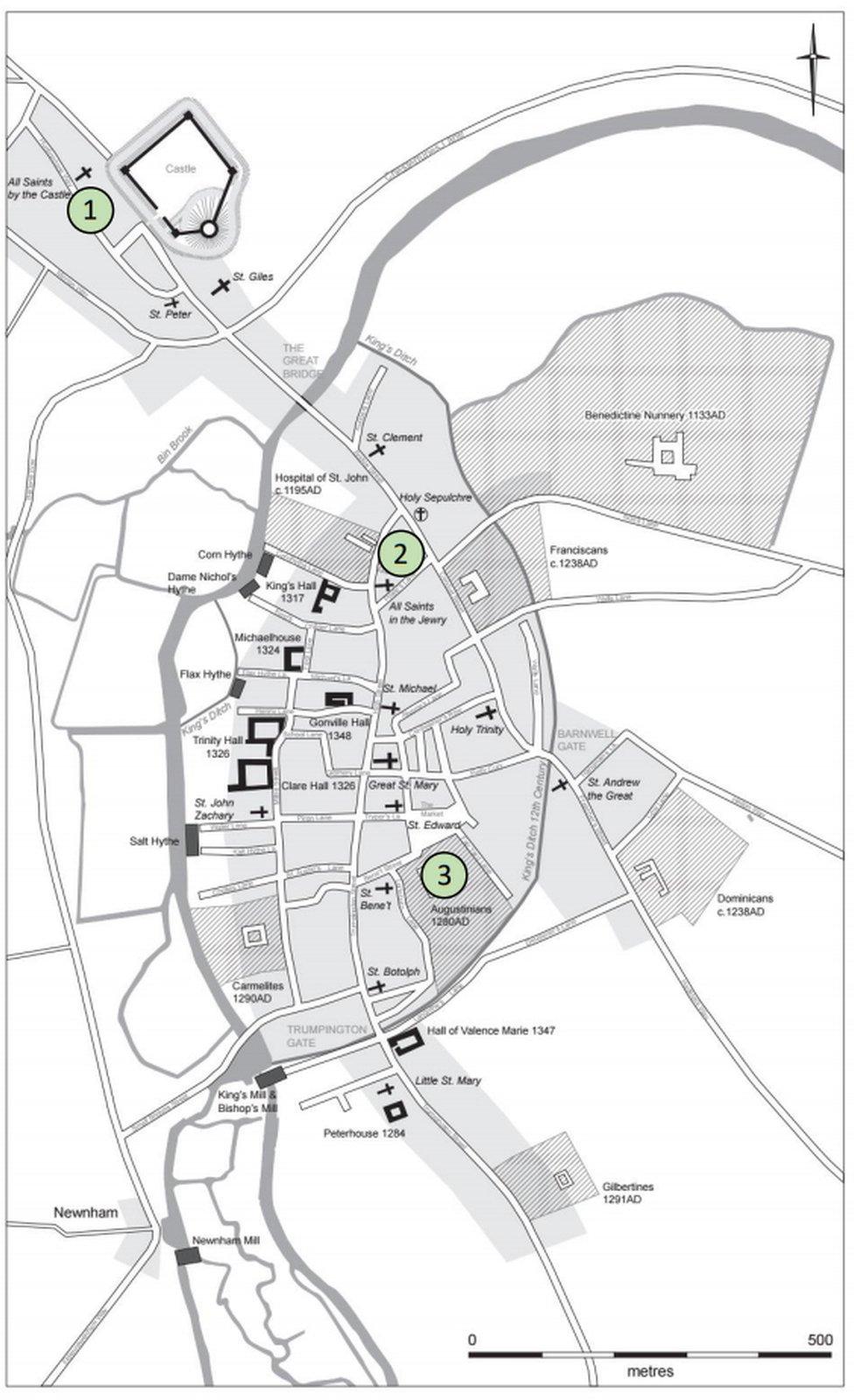
A map of Cambridge c.1350 showing the graveyards at sites which are currently near the Castle Mound (1), on land off St John's Street (2) and on land in the Corn Exchange area (3)

Find BBC News: East of England on Facebook, external, Instagram, external and Twitter, external. If you have a story suggestion email eastofenglandnews@bbc.co.uk
Related topics
- Published25 May 2019
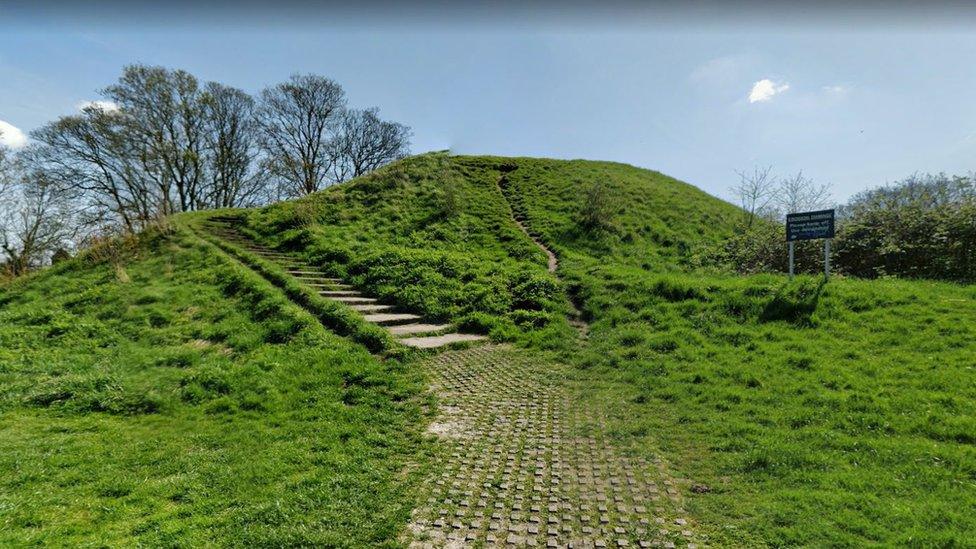
- Published4 December 2018
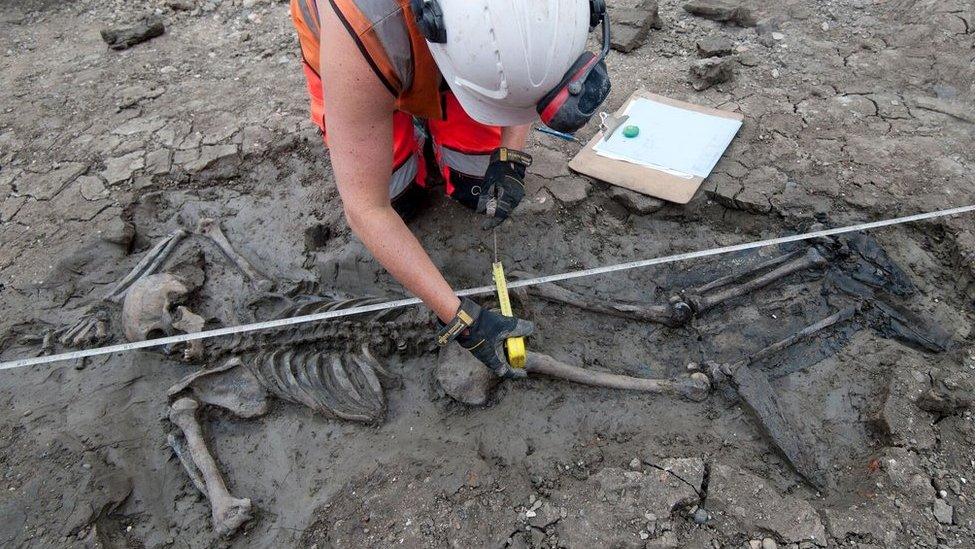
- Published25 January 2017
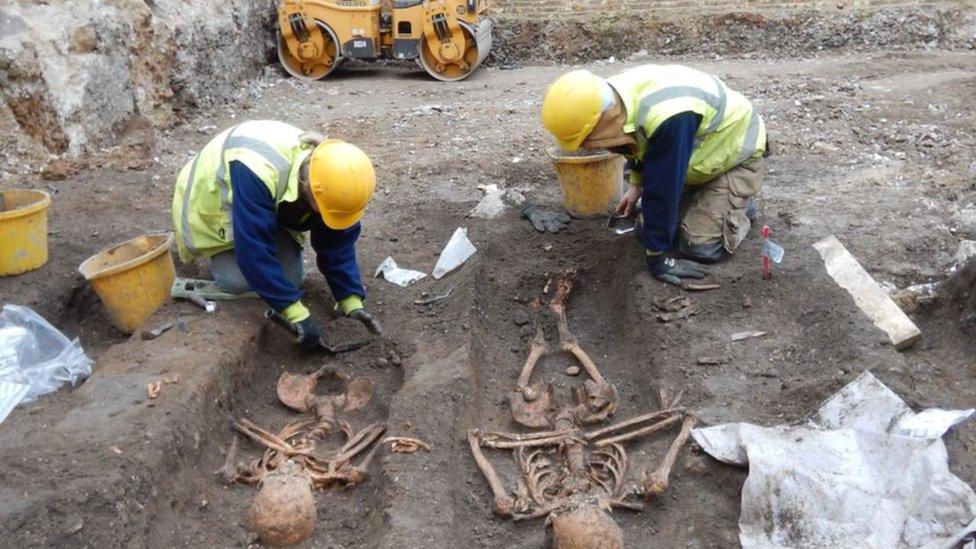
- Published1 April 2015
